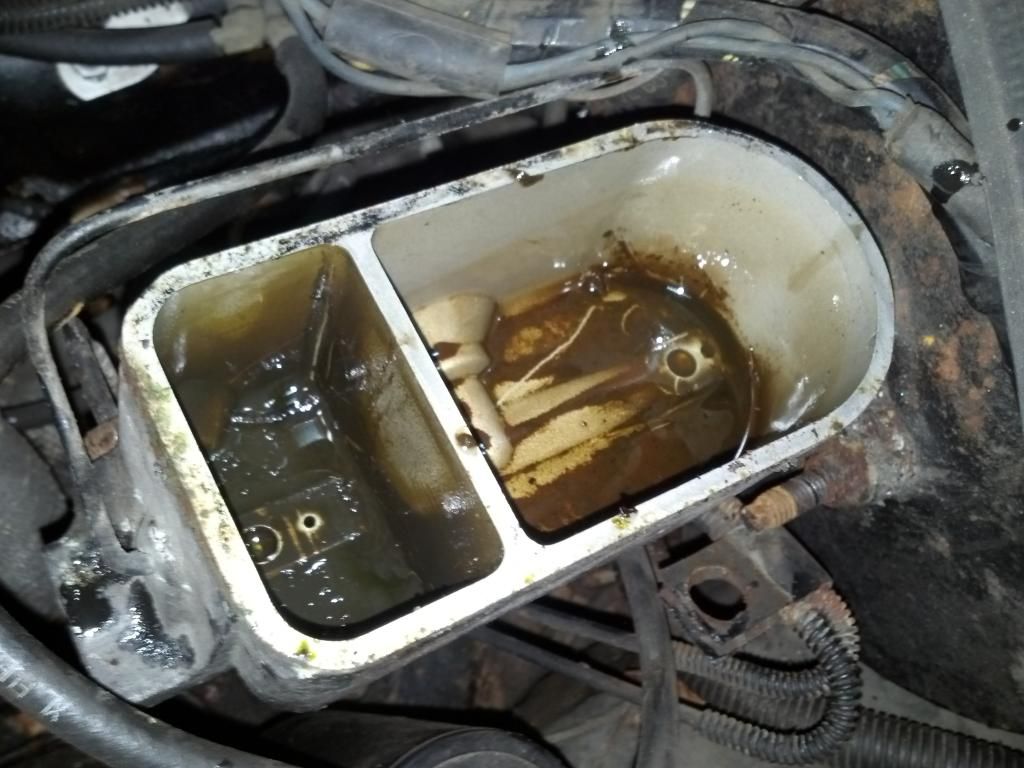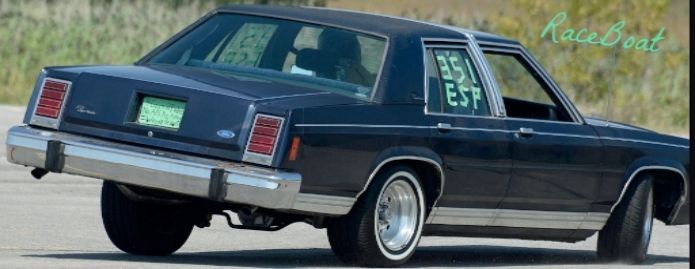For those of you who arenít familiar with me, Iím cheap. Flushing the brake fluid properly is currently beyond my own capability, and I'm too cheap to pay for one. I just use a dedicated turkey baster to suck out what I can from the reservoir. The tip of the baster is modified to fit at least partly into the ring thing that floats on the fluid. After adding fresh fluid, I presume that diffusion and other causes will eventually result in the old and new fluid becoming a uniform 'refreshed' fluid.
So, my question is: How long would it take for the old and new fluid to become a uniform 'refreshed' fluid?
FWIW, when I look at a small amount of the old brake fluid, itís a greenish colour. When I look at a lot in a glass jar, itís practically black. The fresh stuff is relatively clear, so I seem to have a long way to go before the contaminants are sufficiently diluted to make me happier. I can get a liter (close enough to a quart) of brake fluid for about $10. This would give me about six cheapie turkey baster fluid changes. Unfortunately, I can't tell the colour through the wall of the reservoir. Iím interested in finding out what sort of schedule I should use. Thanks in advance.
So, my question is: How long would it take for the old and new fluid to become a uniform 'refreshed' fluid?
FWIW, when I look at a small amount of the old brake fluid, itís a greenish colour. When I look at a lot in a glass jar, itís practically black. The fresh stuff is relatively clear, so I seem to have a long way to go before the contaminants are sufficiently diluted to make me happier. I can get a liter (close enough to a quart) of brake fluid for about $10. This would give me about six cheapie turkey baster fluid changes. Unfortunately, I can't tell the colour through the wall of the reservoir. Iím interested in finding out what sort of schedule I should use. Thanks in advance.





 On the other hand, I did recently see something that was advertised as a one-person brake bleeding kit, and I think the idea was that you attach a container with fluid to the reservoir so you don't need someone adding fluid while you're pumping the brakes. Is that what you're referring too? This might end up being a good example of someone (i.e. me) changing his mind after a second thought.
On the other hand, I did recently see something that was advertised as a one-person brake bleeding kit, and I think the idea was that you attach a container with fluid to the reservoir so you don't need someone adding fluid while you're pumping the brakes. Is that what you're referring too? This might end up being a good example of someone (i.e. me) changing his mind after a second thought.




Comment